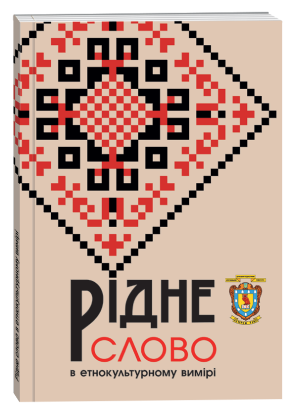THE ETHNOCULTURAL ASPECT OF UKRAINIAN NONVERBAL (ON THE MATERIAL OF POLISSІA PHRASEOLOGY)
DOI:
https://doi.org/10.24919/2518-1602.2024.9.1Keywords:
subdialect, dialect idiom, Polissia phraseology, ethnocultural component, nonverbal behavior, nonverbalAbstract
The article actualizes a group of dialect idiom which related to the ethnospecificity of the nonverbal behavior of Ukrainians. As we know, language issues focused on originality and national identity become especially relevant in times of national crisis, spiritual decline, and moral and physical exhaustion of the people. Purpose of the article is investigate the structural and semantic specificity, the ethnocultural content of Polissia phraseological units to denote the nonverbal behavior of speakers, and thus to find out the national and cultural diversity of fixed turns provided by the means of traditional folk phraseology. The main task of the article demonstrate how language signs are able to encode information about the surrounding world, in particular, about the communicative experience of a particular ethnic group, as well as representatives of certain dialect groups. And also find out the question, how exactly phraseological units used to indicate nonverbal behavior which based on a figurative idea of reality, reflecting the everyday-empirical, cultural-communicative experience of the language group. It is also emphasized that phraseology embodies the emotional experience of the ethnic group, represents knowledge about nonverbal components of communication, primarily facial expressions and gaze, acting as a marker of ethnoculture. Areal stable expressions demonstrate the ethnocultural context as clearly as possible, which proves the variability of the use of dialectal nominations of certain commonly used lexemes to enhance expressive and stylistic coloring. The conclusions should be formulated in such a way that in general phraseology can be qualified not only as a figurative secondary nomination of realities, communicative situations, psychoemotional states, but also understood through the prism of ethnocultural marking of nonverbal behavior of speakers of a particular region. Prospects for further research consist of in the need to identify specific character traits of Ukrainians, distinctive and common nominations of nonverbal language and features of its “phraseological interpretation”.
References
Аркушин, Г. (2012). Західнополіська діалектологія: навч. посіб. з регіон. діалектології. Луцьк: Волин. нац. ун-т ім. Лесі Українки.
Демиденко, Г. (2014) Паралінгвальні фразеологізми в українській етнокультурі: монографія. Кривий Ріг: НПП АСТЕРІКС.
Доброльожа, Г. М. (2010). Фразеологічний словник говірок Житомирщини. Житомир: ПП Туловський.
Жайворонок, В. (2006). Знаки української етнокультури: словник-довідник. Київ: Довіра.
Колоїз, Ж. В. (2022). Лексико-фразеологічні особливості говірки села Тріскині Сарненського району Рівненської області. Вісник Житомирського державного університету імені Івана Франка. Філологічні науки, 1 (96), 103–120. DOI: https://doi.org/10.35433/philology.1(96).2022.103-120.
Мацюк, З. С. (2011). Людина і її буття у західнопольській фразеології (Дис. д-ра філол. наук). Волин. нац. ун-т ім. Лесі Українки, Луцьк.
Мацюк, З. (2013). Що сільце, то нове слівце: словник фразеологізмів Західного Полісся. Луцьк: Вежа-Друк.
Осіпова, Т. Ф. (2019). Невербальна комунікація та своєрідність її омовлення в українському дискурсі: феномен вербалізації невербаліки. Харків.
Словник фразеологізмів української мови (2003) / уклад. В. М. Білоноженко та ін. Київ: Наукова думка.
Ужченко, В. Д., Ужченко, Д. В. (2007). Фразеологія сучасної української мови. Київ.







